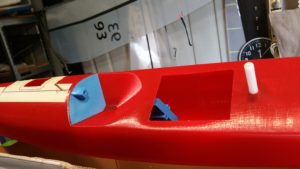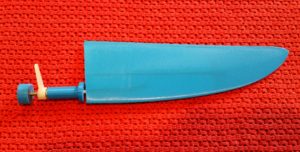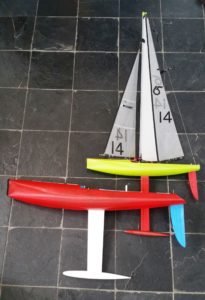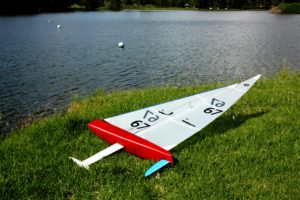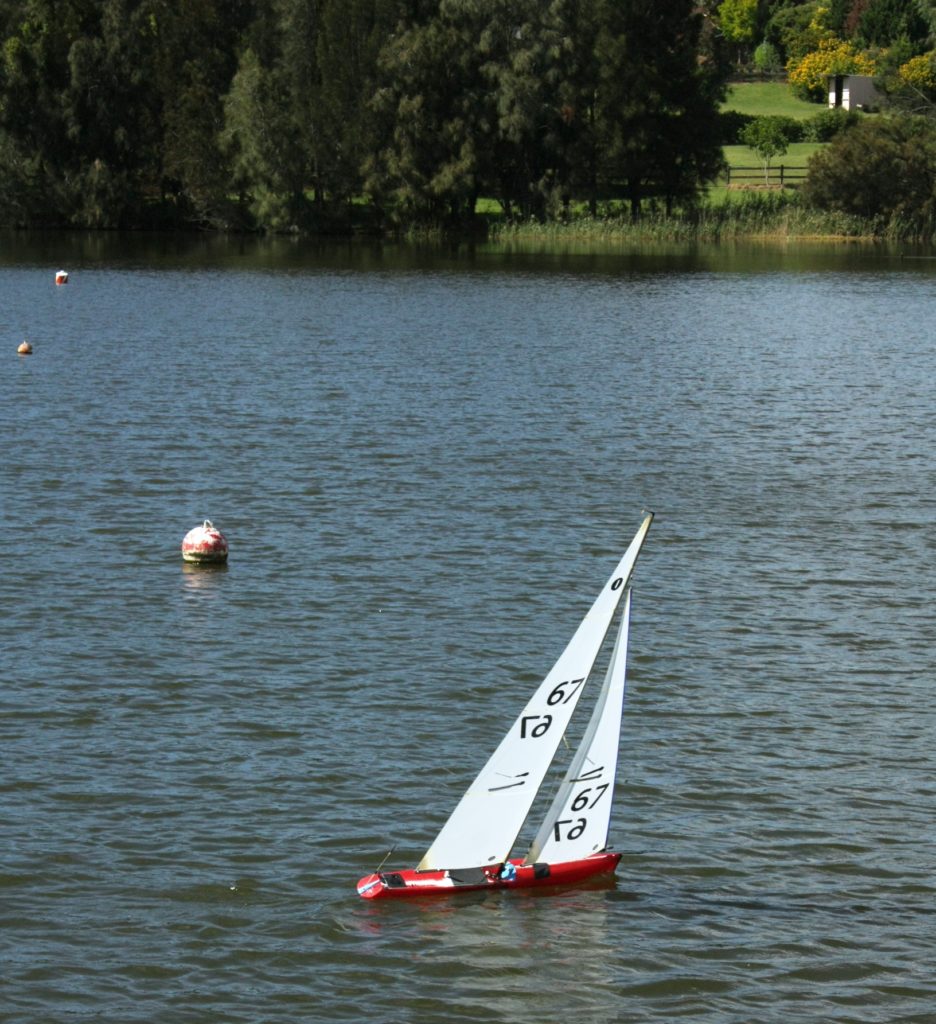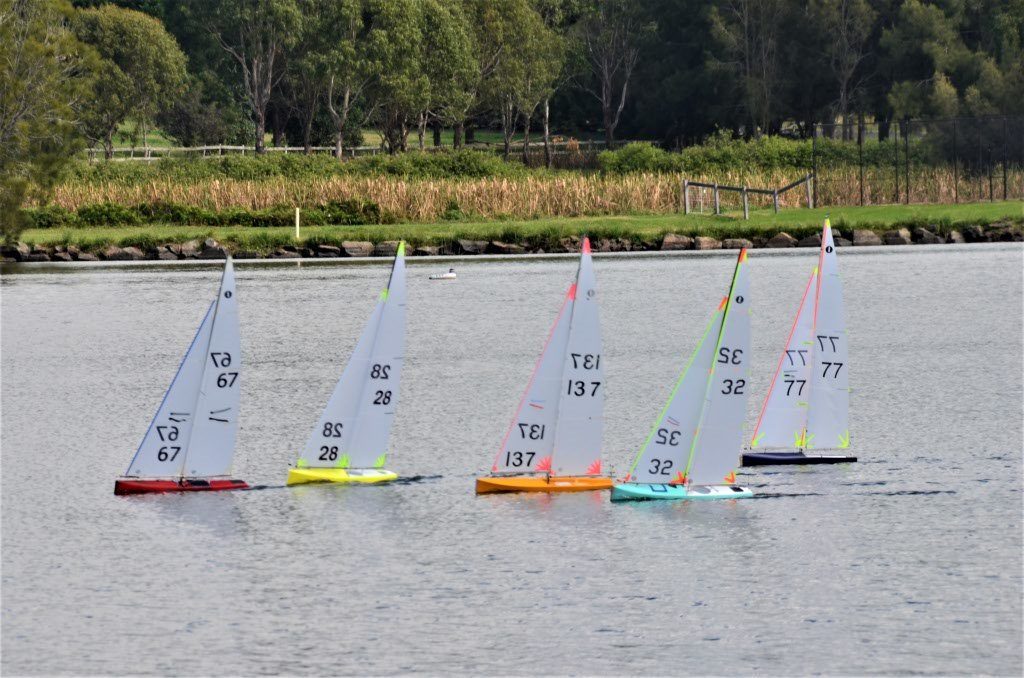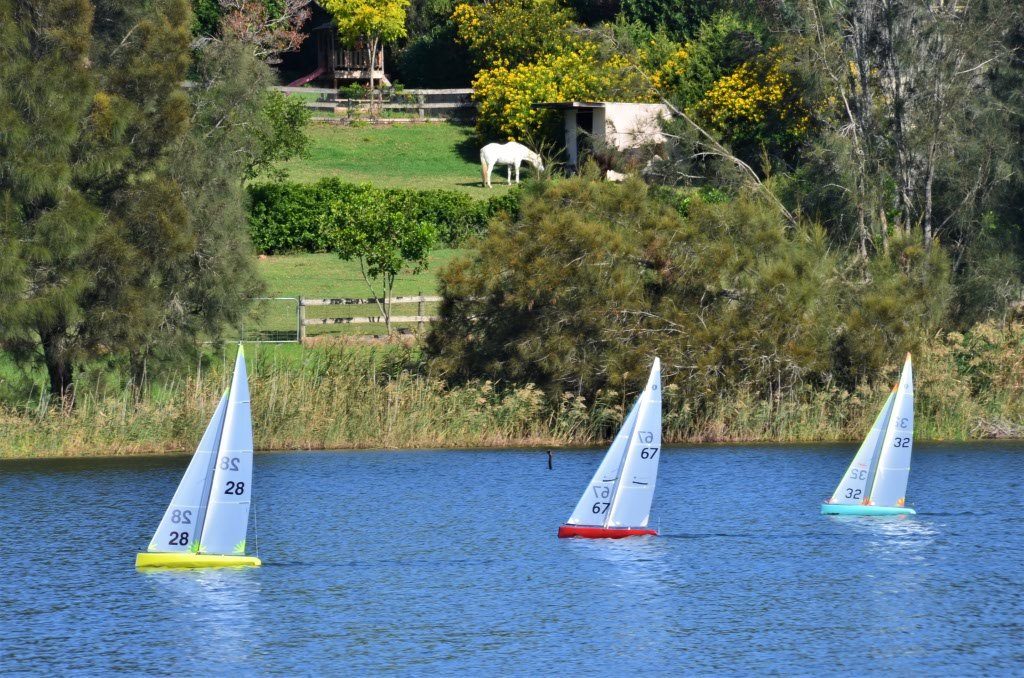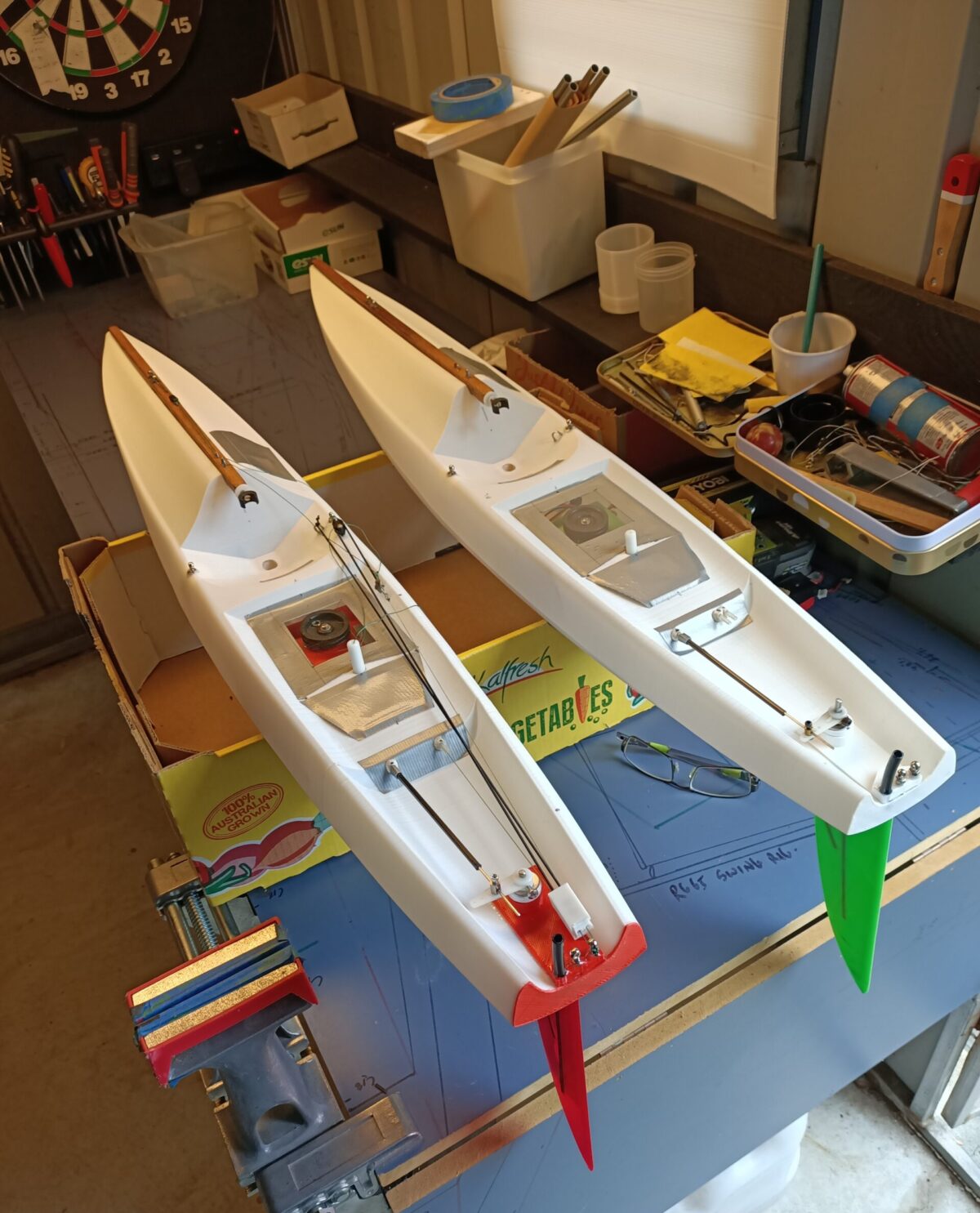Experimenting with alternate materials
Yacht design: Bill Hagerup (USA)
Construction and part design: Selwyn Holland (AUS)
B2 (Banana 2) is the beginning of a series of IOM prototypes centered around analysing the properties of 3d printing filament material other than PLA. I’ve been testing and taking advice on these other materials for 12 months now and finally decided to launch out and try them in the hulls.
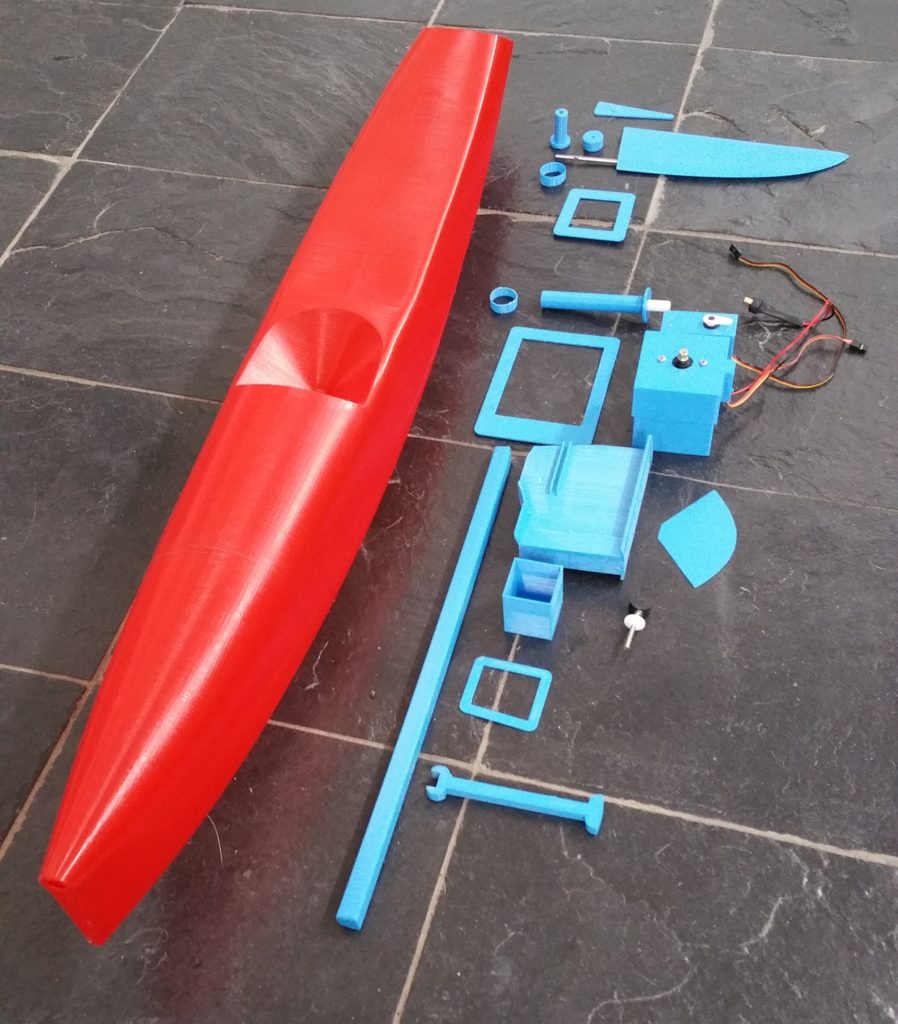
B2 laid out naked
While it is relatively easy to make RC yacht minor parts from most of these materials, the hulls are a different beast. The key is to keep the skin thickness consistent and thin but also strong and resilient for obvious reasons.
PLA is the “go to” filament material used universally across the globe by most amateur 3d printer folk. The other materials (and there are now a wide variety) have their own special printing needs especially when dealing with thin layers for hulls, keels and rudders. The research into the properties of PLA for RC yachting has been wide ranging and I feel that it is very well understood now and a very appropriate material for our sport. There are a number of published articles on all this at the base of this site’s home page… worth a read if you haven’t already done so.
B2 and future versions are being used as a crash dummy to find additional materials that may bring positive results for the bigger yachts sitting on our design board: 10Rs, Marbleheads, A Class, USIOM and more. My gut feeling is that as this technology matures, a competitive 3d printed racing RC yacht will be a blend of many materials depending on the needs/stresses/strength required of the part or hull etc.
A really good example is the use of PLA in the very high stress environment of vangs (kicking strap) in 10Rs. Many of the earlier PLA versions that I have seen failed over and over until more appropriate materials were finally sourced or the design was altered.
It really is a balance between the needs of the part, good design and the material used. Don’t ever be afraid to produce a “dud”. I have always considered failures as part of the learning curve and not something to hide from and be ashamed of.
People who don’t understand the scientific method in the sense of design-test-redesign-test-redesign- etc etc methodology, changing only one variable at a time, will remain frustrated. We have had lots of great progress but also some spectacular failures where I have filled up a garbage bin many times over with rejects throughout a project.
So, here we go again.
B2 is a blend of three different materials that I will report on later. I figured I should build and sail a new design for a while before releasing too much detail in case I give out false information.
This is one of Bill’s new Banana designs and on the first day it hit the water it came 3rd in our club championship against a strong field 0f 14. So the design is fast and stable, but it is how everything “weathers” the knocks and bumps of normal racing is what I will be watching for closely.

On a side note, while the boat is very water tight anyway (always a good idea), the winch, servo and receiver are also in their own waterproof containers… sort of like a double insurance policy. Craig Smith has taught me to be very particular about dry boats. The containers were tested first up by being hosed strongly with the gadgets inside, not a drop got in. Version 1 containers are on the yellow B1, B2 has version 2 with some slight improvements. The water proof containers add only a few grams overall and in addition make it extremely easy to change the gadget if needed. They are attached to the upside of the lids and all one has to do is slide the lid out and have the replacement on a fresh lid ready to replace. It literally takes seconds to change.
I think I’ve been watching the F1 car races too much, but it is there I got the idea for fast changes.
More on all this as time goes by and in particular the materials tested.
